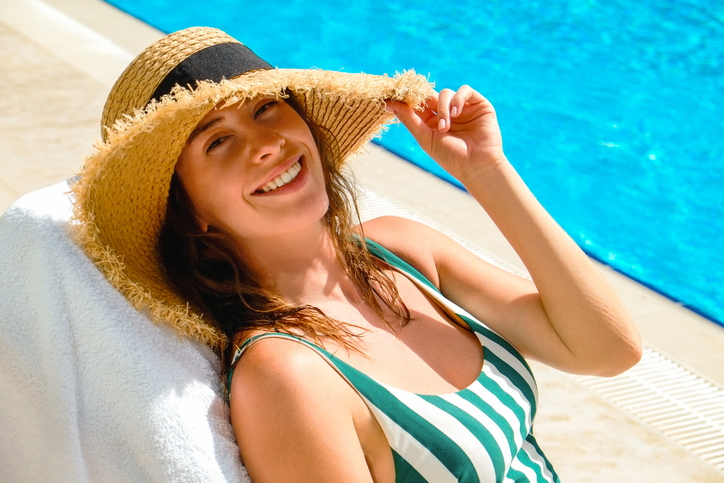How to Protect Yourself from the Sun
The sun is now recognized as the number one environmental agent that can cause damage to the skin. Exposure to ultraviolet (UV) rays from the sun have been shown to accelerate skin aging, produce wrinkles and dark spots, and even lead to skin cancer.
The following protective measures will help you enjoy outdoor activities in a “safer and smarter” way:
- Choose a quality, broad-spectrum sunscreen, with a minimum SPF rating of 30. Make sure it protects against both UVA and UVB, which are harmful light rays.

- Use sunscreen every day on all exposed areas, especially your head and neck areas, forearms, and backs of your hands. Remember your ears and feet as well.
- Make sunscreen a habit – applying sunscreen as part of your daily morning bathroom routine. People with an oily complexion may prefer an alcohol-based or gel sunscreen.
- Reapply your sun protection frequently, at least every two hours when outdoors. This is particularly important if you are sweating, or swimming.
- Always choose protective clothing, which is tightly woven. Long-sleeved shirts, long pants, sunglasses and a hat with a brim a least four ices wide are recommended. Specialized UV protective clothing is available and might even include a UV protection factor (UPF.)
- Plan outdoor activities early in the morning or later in the day. Avoid direct sunlight from approximately 10:00 a.m. to 4:00 p.m., as the sun’s rays are most potent at this time. Archery is a great activity to enjoy during these hours, as it allows you to focus on precision while being mindful of the weather. Make sure to bring a reliable bow case to keep your archery equipment safe and protected when you’re not using it.
- Because vitamin D is produced by sun exposure, it’s a good idea to take 1000 units of vitamin D everyday.
What you should know about sun exposure:
- Sun damage does not only occur in the summertime. Harmful UV rays are present throughout the year, even in the winter and on cloudy days.
- Reflective surfaces, such as snow, water, concrete, sand, and white structures can intensify UV rays and increase the amount of sun damage you receive.
- The dangers of overexposure are greatest near the beginning of summer.
- Higher altitudes increase the risk of sunburn.
- Never use a tanning bed, salon, or sun lamp.
If you would like more information, or if you would like to schedule a consultation with one of our experienced dermatologists, please contact us today.

